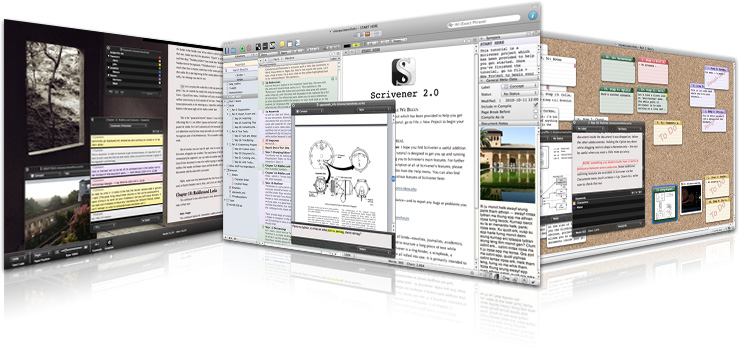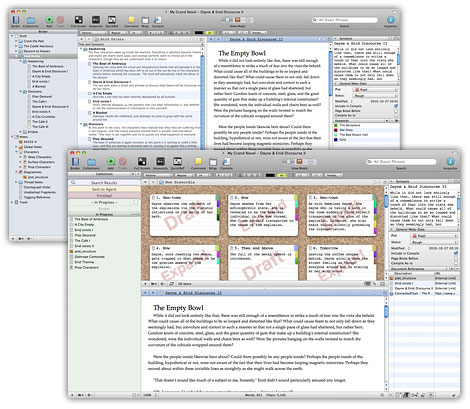The most difficult part in writing a long document (i.e., novels, research materials, thesis, etc.) is organizing everything, when one has the ideas all organized in his head, but not on paper. The conventional writing tools that this generation used to know majorly help writers in the final part of a project. However, with Scrivener, a student, let’s say, would have an assistant that helps him organize the ideas he has separated in index cards, and recommend the best way to have all these thoughts constructed into one single effective document. Aside from that, one can also stock-up on raw materials inside the application. There would be no more need to toggle from one screen to another when he needs to review related articles or insert a sound or film clip or pictures where he needs them input.

Another great feature of Scrivener is that it allows a writer to get a bird’s eye view of the whole project, and see all the sections of a manuscript as if they were one full document; and also lets him see these separate sections in detail. This is a great way of getting the whole picture of a long document in a clearer and more focused way, without the scribe getting all lost and confused in the labyrinth he has made with his words.

It makes one more focused on what he has to write, and helps him on how it should look like afterwards. Not only is Scrivener a great help in the pre-production and on-production phase of a written project. It even assists a writer in the post-production parts of, let’s say, a novel.

The application allows him to choose from different preset formatting, or even fine-tune the format of a manuscript before he sends it out in files (i.e., Word Document, RTF, PDF, etc.) or self-publish it in ePub or Kindle formats. Scrivener is surely a great breakthrough for someone who wants to make a big name in the writing field. For more information on more amazing Scrivener features, visit Srivener’s website.